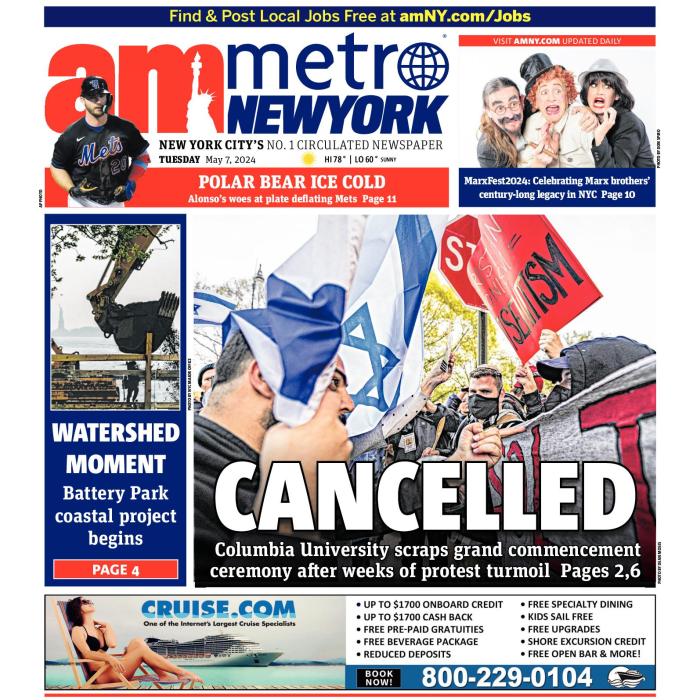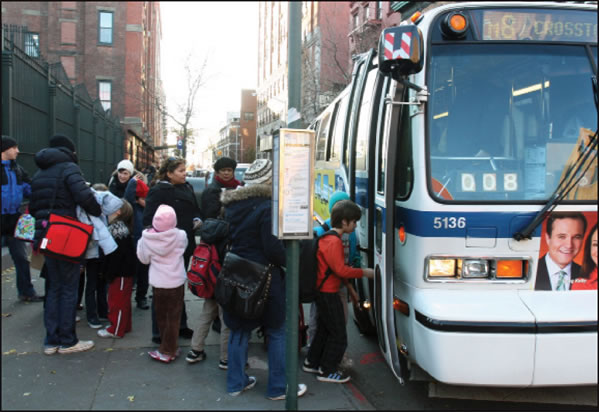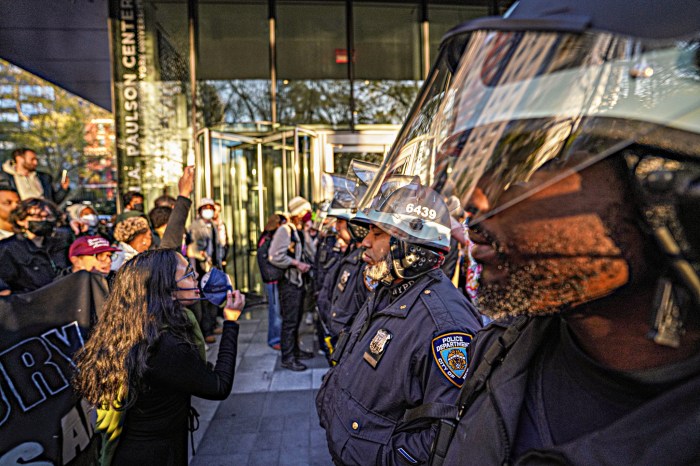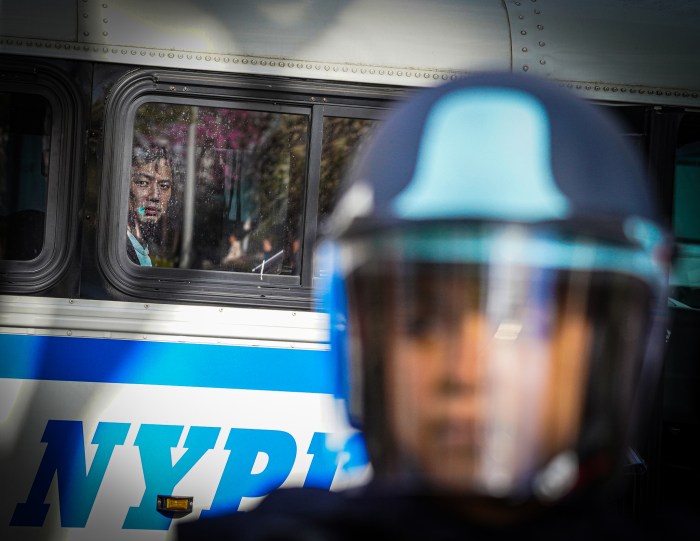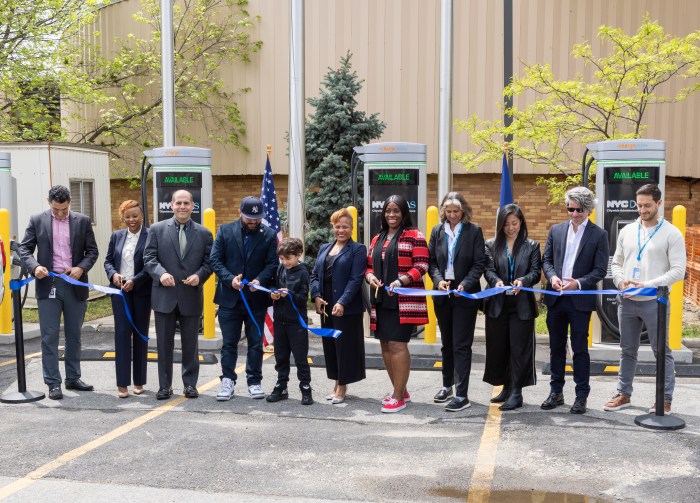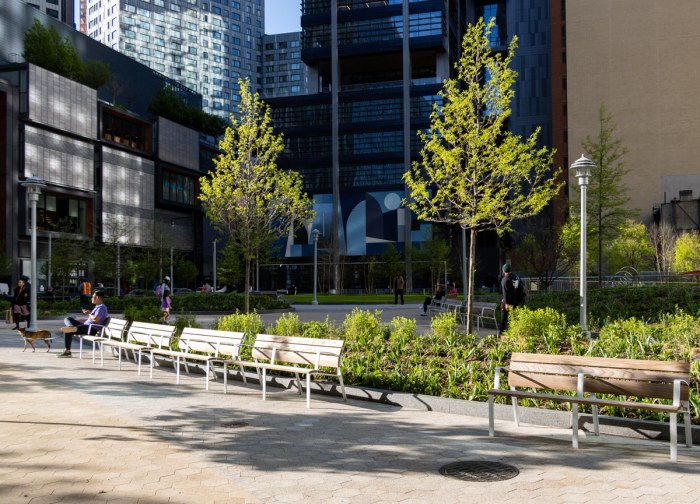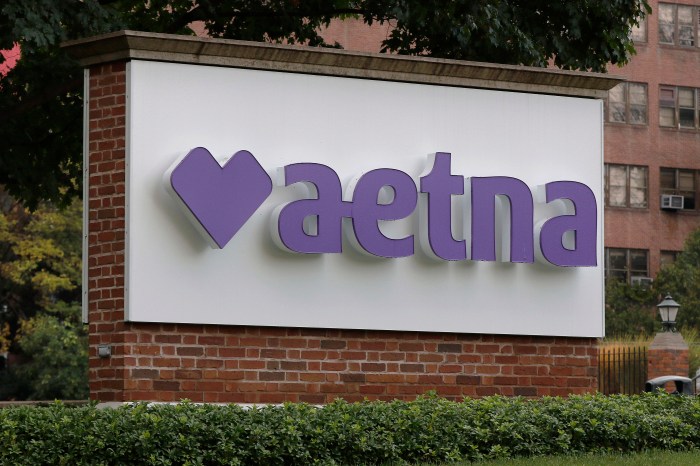By Lesley Sussman
Community Board 3 said it would tackle the contentious issue of the Metropolitan Transportation Authority’s proposed service cuts to several East Side bus routes that may drastically impact thousands of bus riders who regularly use the M15 City Hall branch line, the M9, M8 and M22 buses. Some subway service may also be affected.
The board’s district manager, Susan Stetzer, said the severe reductions are scheduled for discussion at C.B. 3’s Transportation and Public Safety/Environment Committee meeting Wed., Feb. 10, 6:30 p.m., at University Settlement, 184 Eldridge St.
The alarm was sounded at C.B. 3’s full board meeting Tues., Jan. 26, by David Kupferberg, a member of the Committee for Better Transit — a 41-year-old, independent, transit advocacy organization comprised of transit experts and users.
The meeting, held at P.S. 20, 166 Essex St. — and attended by about 100 local residents, plus representatives of advocacy groups, local politicians and their representatives — heard Kupferberg lash out at the M.T.A.
“They don’t wish to use what distinguishes humanity from the rest of the animal kingdom — common sense,” he declared.
Kupferberg said that the elimination of the M15 (Allen St./Water St.) City Hall branch bus route, along with the M9 (Avenue B/Essex St./East Broadway) and M22 (Madison St. to Battery Park City.), would mean that “riders would have to find other means to get to Battery Park City, and even Bellevue Hospital.”
“Even worse, there would be no more weekend cross-town service south of 14th St.,” Kupferberg added. “The Transit authority [NYC Transit] claims that these corridors have relatively low ridership. But there are multiple corridors in Staten Island that have lower ridership, but won’t be eliminated. These cuts will disproportionately affect Brooklyn and Manhattan.”
The transit advocate said that the end result of all these reductions would be increased travel time for many Lower East Side residents who would be expected to use other forms of mass transit to get to their destinations.
The M.T.A.’s grim 2009 budget proposal — the result of a $400 million budget shortfall in state financing — not only calls for the elimination of up to 21 bus lines throughout the five boroughs, but also the curtailment of the free rides for students program, the layoff of approximately 700 workers and a slash in the M.T.A.’s management salaries and administrative costs.
If NYC Transit’s plans go through, there would also be a reduction of late-night subway service — such as the N train, which would no longer make local stops in Lower Manhattan between 11 p.m. and 6 a.m. Service for the W and Z lines is also on the chopping block — although word is that the Z may be spared.
Also, service on the M and G subway lines would be reduced, along with special services to handicapped riders who are now picked up at home and driven to destinations throughout the city.
M.T.A. board members have acknowledged that the cuts are “painful,” but placed blame on the state for its failure to adequately finance basic public services. They said that none of the proposed changes would take place until the spring or summer, and that there are still public hearings scheduled.
Transit officials explained that one reason for the agency’s budget deficit was the high cost of labor, especially the 11 percent raises the State Supreme Court recently approved for the M.T.A.’s union workforce.
State officials, meanwhile, have said that the cuts are a consequence of New York’s overall fiscal crises, but that they still held out hope some alternative to bus and train service reductions can be reached. However, Governor Paterson, speaking at a recent press conference, did not sound very optimistic about such a prospect.
“My hands are tied right now because we don’t have any resources to give them,” he told reporters.
At the Jan. 26 C.B. 3 meeting, Kupferberg called for the M.T.A. to undertake further studies before making any cuts to East Village bus service to determine exactly what impact they would have on local residents. He also offered the following countermeasures:
• Transit maintain the current service spans and all route paths on the M9 and M15 buses.
• Allow the M21 bus to become a “true” Houston St. cross-town line, and that it be permitted to operate daily at its current level until more data on ridership are collected.
• The M22 line be allowed to operate between Battery Park City and Bellevue Hospital north-south at all times via Madison, Jackson, Grand and Pitt Sts. and Avenue C.
Kupferberg said that this proposal “fills a gap in the Lower East Side service grid, gives overnight riders more options, strengthens the M22 and, above all, maintains all corridors.” He called upon C.B. 3 and residents to support this measure and not allow Transit to use “Divide-and-conquer techniques, ignorance and hypocrisy.”
Meanwhile, politicians and their representatives who attended the Tuesday evening board meeting said they were behind efforts such as this one to stop the service cuts proposed by NYC Transit.
Freshman Councilmember Margaret Chin, who was recently appointed chairperson of the City Council’s Lower Manhattan Redevelopment Committee, vowed to battle the proposed cuts.
“I’m definitely going to fight this,” she said. “On the Lower East Side we need our bus service — especially people who live on the far East Side and who aren’t close to any subways.”
A spokesperson for Assembly Speaker Sheldon Silver, who has been championing a financial rescue plan for the M.T.A. that would prevent service cuts, told The Villager, “I know that he’s concerned and that he’s going to fight all of this.”
Borough President Scott Stringer said he’s on record opposing any service cuts. Stringer recently described the proposed cuts as a “budget dance that is quickly becoming known as the hustle.”
Residents also weighed in on the contentious issue. Diane Holfern, 68, of 120 E. Sixth St., said losing the M8 bus — Eighth St. cross-town — would be a great inconvenience to her.
“It’s the only way by bus below 14th St. to get from the West Village to the East Village,” she said. “I have friends in a nursing home that I need to visit, and it’s hard for me to walk to the subway or up to 14th St.”
Among the more severe elements of the M.T.A.’s local service reduction proposals are:
• Discontinuing the M21 line on weekends. About 600 average weekday customers would be required to transfer to the rerouted M9 for service to Avenue C. Roughly 1,140 weekend customers would either use the rerouted M9 or walk up to 15 minutes to the M14.
• Discontinue weekday M22 service west of City Hall. Weekend M22 service is proposed to be discontinued entirely. Around 1,900 weekday customers and 1,500 weekend customers would be required to walk eight minutes to catch a connecting bus.
• Discontinue weekend service on the M22. About 3,250 weekend customers would be required to walk 10 to 15 minutes to the M9.
• Discontinue weekend service on the M8. About 2,360 weekend customers would be required to use the M14. A typical customer’s trip would increase by up to 15 minutes.
• Discontinue overnight bus service on the M1, M8, M16, M22, M50 and M66.
This month, M.T.A. Chairperson Jay Walder said the board is still evaluating all the proposed changes that are slated to go into effect in late June, and will schedule eight public hearings before any final action is taken. The first hearing will be March 4 at Fashion Institute of Technology, Seventh Ave. and 22nd St.
